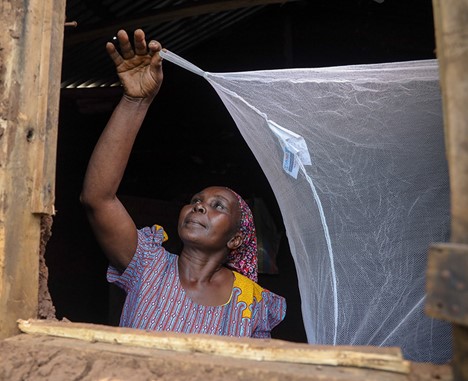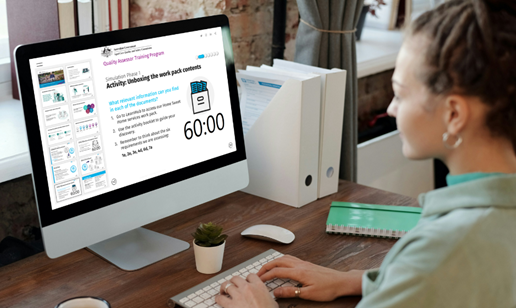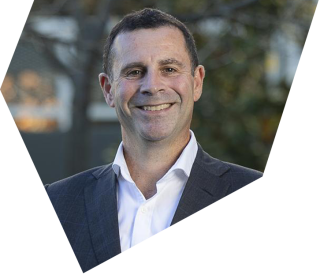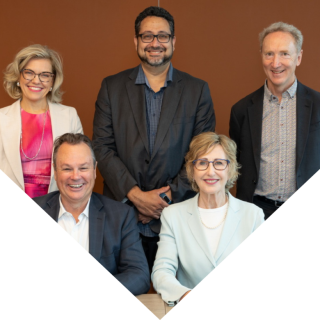"It's About Doing With People, Not Doing To People" - How ThinkPlaceX Melbourne Is Championing Human-Centred Design

For more than 18 years, ThinkPlaceX - the strategy and design arm of Synergy Group - has partnered with government, solving Australia's most complex and systemic challenges with social impact-driven solutions. Alongside our co-design expertise, we're sought after for the deep domain experience that our consultants bring to the job. We understand the ecosystems we operate in, and the nuances of Australia's diverse regions.
At the Synergy Group Melbourne office, ThinkPlaceX works strategically alongside Synergy Group's Consulting, Law and Managed Services arms. The four specialties work in some of the biggest government in healthcare, education, and defence.
Janine Kuehlich, ThinkPlaceX's General Manager for Victoria, encapsulates our ThinkPlaceX edge well. Following a career as a medical research scientist - she holds a Bachelor of Science (Honours) in Genetics and Biochemistry and a Masters of Urban Horticulture - she entered the design world with a drive to apply her creative problem-solving skills to complex social issues.
In recent years, Janine has been deeply involved in supporting Australia's national aged care reforms, working on a range of strategic projects to help shape a new system in response to the Royal Commission findings.
Here, we speak to Janine about ThinkPlaceX Melbourne's current focus, and how human-centred design can help our government clients understand - and solve - messy human problems
You're ThinkPlaceX's General Manager for Victoria. Tell us about that role, and what it's like working in the Melbourne office.
In the General Manager role, I wear a few different hats. There's the internal aspects, where I manage the ThinkPlaceX Melbourne team - I make sure that they're thriving and that we've got a really great culture. I'm really lucky with the team that I do have; we've got a real breadth that covers all the expertise that ThinkPlaceX represents. So I've got an award-winning ethnographic researcher who's amazing at telling deep empathy-led human stories; we've just brought on another senior leader who specialises in really complex organisational change; I've got user experience (UX) service design capabilities, which is really great to help our clients understand how to do interfaces and better deliver services to their constituents; and we've got some brand and marketing capability as well, which is awesome. Our capability in Melbourne is part of a national team of 30+ designers with an extensive set of design skills.
So that's my team hat that I wear as a manager. Then the external hat is the demand side; how do I get boots on the ground, meet the clients here in Victoria, and grow our market presence?
The Melbourne office is in a vibrant part of the city. What do you love about the area?
We're really lucky - we have so much good food and coffee on our doorstep, which is great. I'd love to save more money, but I can't make a Vietnamese noodle salad like the place nearby, so I treat myself to lunch every day. Friday is one of our in-office days for our ThinkPlaceX team, and because we're just a block away from Bourke Street Mall, I walk down there on Friday afternoons to watch the buskers. In the summer, it's nice to go and sit in the hustle and bustle and listen to whichever musician is playing. There's the big old General Post Office building there, and in the afternoon sun, it glows, and it makes me really happy that I moved back to Melbourne two years ago. Those afternoons after work are when I think, 'Yeah, this is a great city'.
It is a great city! Let's backtrack a bit. Before becoming a designer, you worked as a research assistant. How do the skills you honed in that career lend themselves to your work as a designer?
Even as a kid, I was always quite curious. I'm analytical and a bit of a perfectionist, so I think those were good things to hone as a scientist. I specialised in biology, genetics, and biochemistry, but I think there was always something creative missing from my work as a scientist. Your curiosity is only inside a test tube. I was considering whether or not to do a PhD in malaria research, but a career in academia wasn't what I was after. My partner at the time had heard of ThinkPlaceX and told me they were a great problem-solving company, and as I was a great problem-solver, he suggested I get in touch. I applied, and it feels like the rest is history.
What I love about consulting and the design world is that it's about taking all the analysis and problem-solving aspects I had as a scientist, but overlaying a human change lens of creativity and innovation. At ThinkPlaceX, we ask what the roadmap to change is. What are the ideas and strategies we could implement to do something about what we now understand?
It was a cool, full-circle moment when I worked for Breakthrough ACTION. One of the projects I worked on was a malaria project focusing on behaviour change. We were working on how to encourage women and children, in particular in Kenya, to sleep under insecticide-treated nets to reduce the spread of malaria. So that was a really cool moment; I thought I'd do a PhD in malaria, and then I worked on social behaviour change in relation to malaria.
"By involving people in the solution, you'll get innovation and empowerment. You are going to get buy-in for change. It's about doing with people, not doing to people."

Janine Kuehlich worked with Breakthrough Action to encourage life-saving behaviour change interventions in developing nations.
That really is a full-circle moment. Speaking of your work as a designer, human-centred design is central to both your and ThinkPlaceX's work. Can you tell us how this approach lends itself well to policy and service design? Why is community consultation so important?
Human centricity is about empowering, understanding and acknowledging that no one person knows how to solve a problem. The challenges we work on with our government clients typically aren't straightforward. They're things like changing policy and reforming services, and regulations. So while we bring a depth of expertise in a design process, we're also bringing together those different voices and the humans impacted by a service, who are using a service, who are being regulated. We even bring the businesses together into the room through consultation, so we're really looking at the multiple facets of a problem, and the problem's a human problem. We're really trying to shape and change human experience in the world that we experience and live in, so we're making sure that we deeply empathise with that human conundrum. By involving people in the solution, you'll get innovation and empowerment. You are going to get a buy-in for the change. It's about doing with people, not doing to people. Co-design and human-centred design can often be a tick-box process. But as an ethics-led team, we make sure that we truly listen to the voices that we are consulting for.
Do you think the empathy-led approach is something that ThinkPlaceX designers naturally excel at? Or is it something that you learn on the job as well?
It's a bit of both. It's something we certainly look for in recruitment, but then we hone it. I think the other things that I find quite interesting with the work that we do at ThinkPlaceX is that, because we specialise in working with government and the complexity of government, we also deeply understand the human experience; and then we also zoom out to examine the whole ecosystem and all the forces at play. People exist in a huge, messy world, and government has only a part to play in how it can influence and shape that for the better. To help our government clients do this, we hire people who care about people and can see that big strategic picture too. Our team are from diverse backgrounds; from anthropology and industrial design to UX designers and mathematicians... or scientists like me! The baseline skills that people join us with are varied.
ThinkPlaceX has strong expertise in designing programs that deeply connect with the target audience. You have strong experience in the healthcare sector. The Learning & Development journey you helped create for The Aged Care Quality & Safety Commission even won a Good Design Award! Looking at the healthcare sector in both Victoria and wider Australia, are there any innovations or reforms that you're excited by?
I've been working closely in the aged care reform space on a range of different projects, all of them quite strategic. Firstly, I'm trying to understand what a once-in-a-generation reform of our aged care sector looks like. This involves working with different project teams to grapple with the fact that we are trying to build a whole new aged care system for our country with new regulatory instruments in place, while also dealing with an old system that clearly had a lot of problems, given the Royal Commission findings. So that's been a real privilege over the last few years, and it's going to be really exciting to see the Aged Care Act go live this November.
Secondly, digital transformation in the healthcare sector is another big shift. There's a really interesting conundrum around how to balance efficiency gains with privacy risks. We've always had a strategic digital transformation capability at ThinkPlaceX, but with Synergy Group's digital team, we've got deep technical expertise now, too. There's a really beautiful marriage between ThinkPlaceX's innovation strategy and healthcare, paired with the technical capability that we now have in-house with Synergy Group.
And finally, the impact on healthcare frontline workers during COVID was more significant here in Victoria than anywhere else in Australia - their risk of burnout and their psychological safety. The workforce organisational change capability that we have enables us to work through how to reform worker experience for the better, and innovate into what that looks like for future resilience.

ThinkPlaceX's contribution to the Aged Care Quality & Safety Commission's new learning and development journey won us a Good Design Award.
Thanks Janine! Last one, how can people get in touch?
Email is good - Janine.Kuehlich@thinkplace.com.au

Synergy Group Beyond Federal Government: A Discussion With Our Melbourne Managing Partner, Simon Benjamin

ThinkPlace Australia Joins Synergy Group
